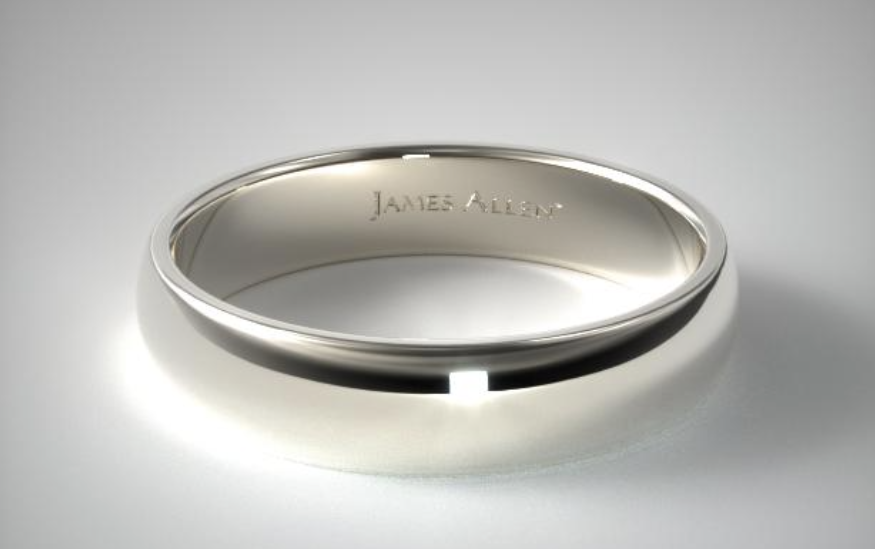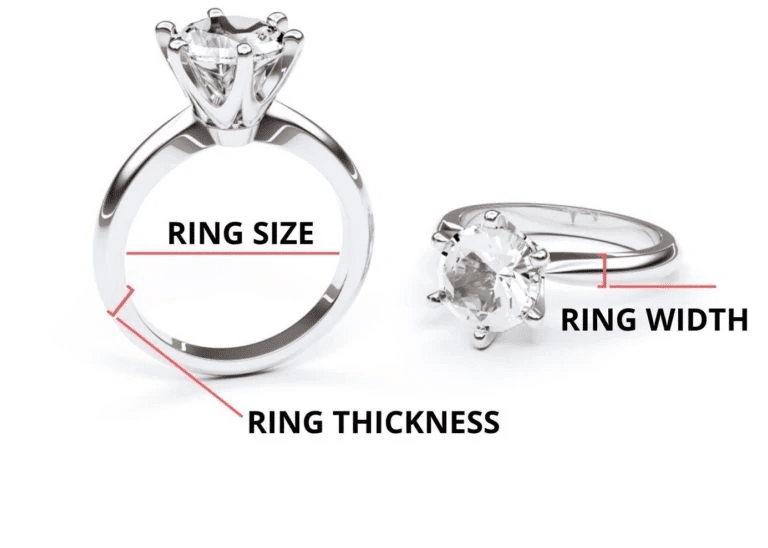
Table of Contents
With all the things you have to arrange and decide for your wedding preparations, choosing the width of your ring probably isn’t number one on your list of priorities. In fact, you’d be forgiven for thinking band width only referred to the strength of your internet connection!
While we’re not here to add another headache and cost-increasing problem to the sizeable issues in your diary, we are going to tell you that the width of your ring band is important. The two most popular widths are 4mm and 6mm. Let’s take a look at which of them is the better option, their differences, and their pros and cons.
Quick Takeaway: 6mm is 50% wider than 4mm and suits larger hands, while 4mm is lighter, possibly more comfortable and suits most hands. Pick one that suits your hand size but think of increasing the width if you’re adding embellishments, such as diamonds.
Why Does Ring Size Matter?


While choosing the best wedding ring width [or band width, as it’s commonly called] isn’t a complicated process, it is important to know the different widths available, and that you’re able to make a choice based on this knowledge and the size of your hands.
Be honest with yourself. Would you buy a $1,000 suit without making sure it looked great? Then don’t make that mistake with your ring. Know the difference between 4mm and 6mm variants, try them on, then breathe easy.
What’s the Difference Between Sizes?

Band width relates to how wide a ring looks when you wear ring. This is not to be confused with ring thickness. A 4mm width will appear thinner, while a 6mm width [that’s a 50% increase] will appear thicker. Note that the typical range for men’s ring width ranges from 4mm to 6mm, but these numbers can go as low as 2mm and as high as 12mm and above. The difference between 4mm and 6mm is partly a matter of taste.
The Size of Your Hands Helps Determine Ring Width
It’s that matter of your hand size that makes all the difference. If your hands are average-sized, then a 4mm band width may look more appropriate. If you have larger, longer hands, then the 6mm variant will fill up more of that increased space.
Will 4mm and 6mm Rings Fit Differently?


This may surprise you, but yes, there is a difference in fit, even between 4mm and 6mm band widths. A 4mm ring will fit more loosely and allow for more movement on your finger, while a 6mm width will fit more securely because there is more ring in contact with your finger.
Compare it to wearing a belt around your waist. A pencil-thin belt is going to be less secure than the wide-type weightlifters use. On a microscopic level, it’s the same with your ring.
Is There a Difference in Price and Quality Between 4mm and 6mm Rings?
4mm and 6mm rings will differ in terms of price and quality. That’s right, the 6mm variants are generally more expensive because of the simple fact that they use more metal. That extra 50% of 18-karat gold, platinum, or palladium is going to cost you more. But wider rings are also stronger due to that increase in metal usage and hand coverage.
What is a Domed Ring?
Doming is essentially where the back of the ring is narrower than the front, knuckle-sitting part. Somewhat like a bend on a banked racing circuit, the ring widens as it loops around the top of your finger, meaning more metal is exposed on top. So when purchasing your ring size, check that the wider banked part is suitable for your hand size.
Consider a Wider Width If You Want Embellishments

A 6mm [and larger] or domed ring could be the ideal solution if you want to add embellishments like diamonds. The extra space available at the top of the ring provides an ideal base for those features, whereas a narrower 4mm ring will struggle to incorporate all but the smallest elements.
Wrapping Up
It’s not complicated, but the difference between 4mm and 6mm rings makes quite a difference. Appearance, fit, price, and suitability are all affected by that ostensibly small difference. Final words? Choose a ring that’s comfortable and suits your hand size. But if you want to add engravings, gemstones, or other embellishments, pick a wider size to accommodate them.
Related Articles
Wedding Band as an Engagement Ring – Why Do It?
Why Choose a Hammered Wedding Band (Pros, Cons, & Tips)
12 Metals for Men’s Wedding Bands: Which Is the Best?









